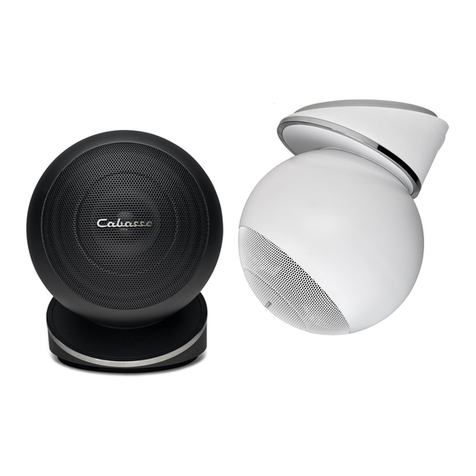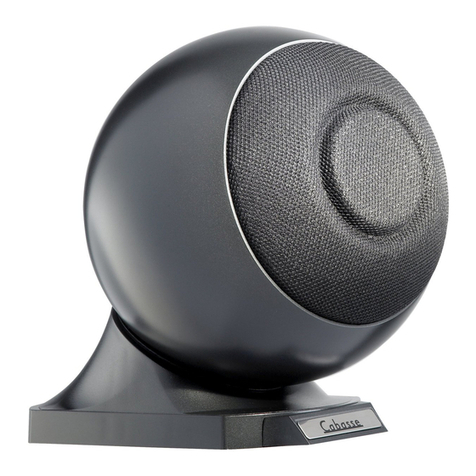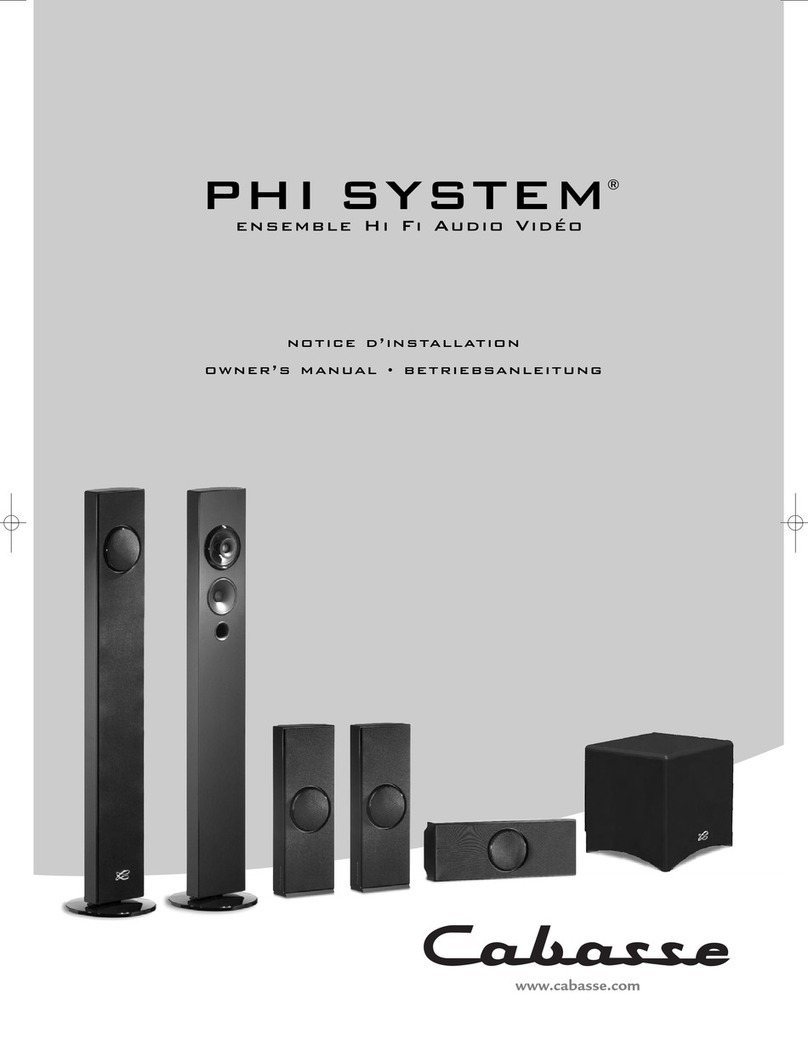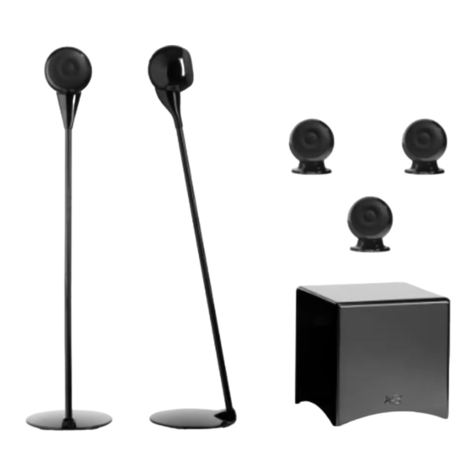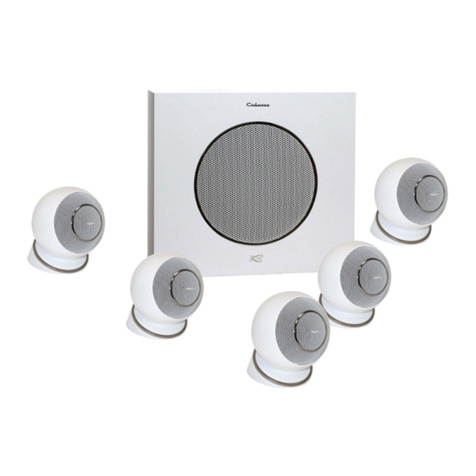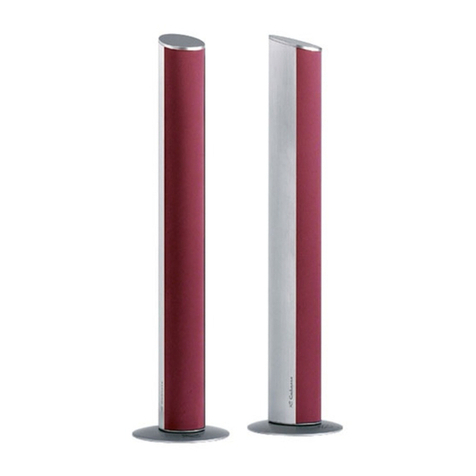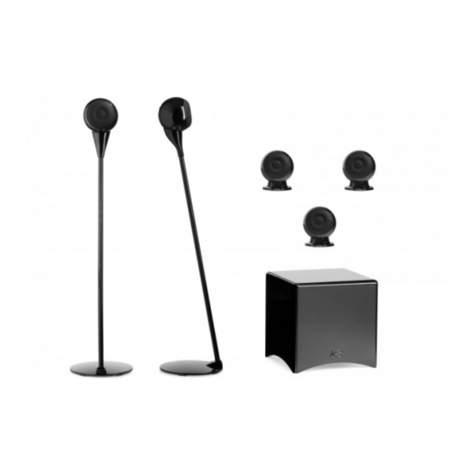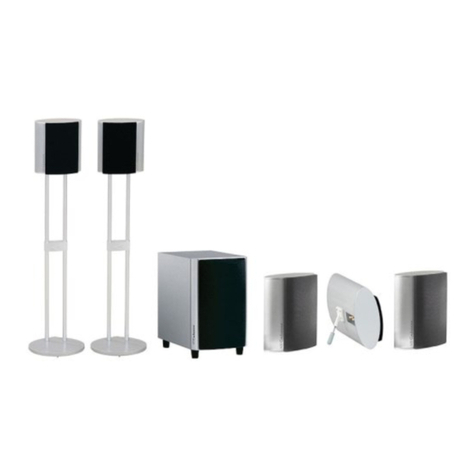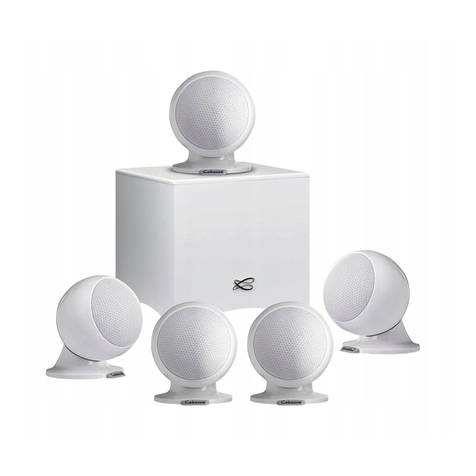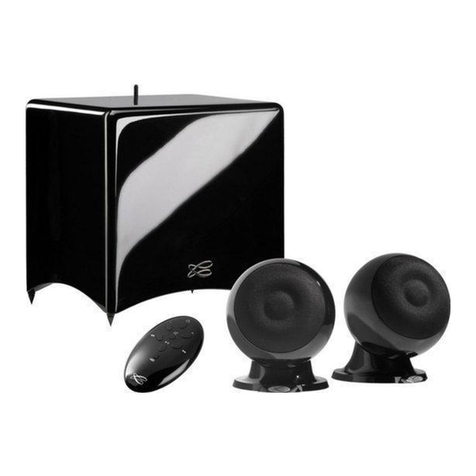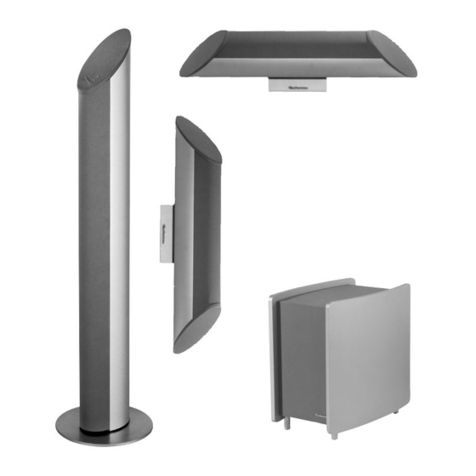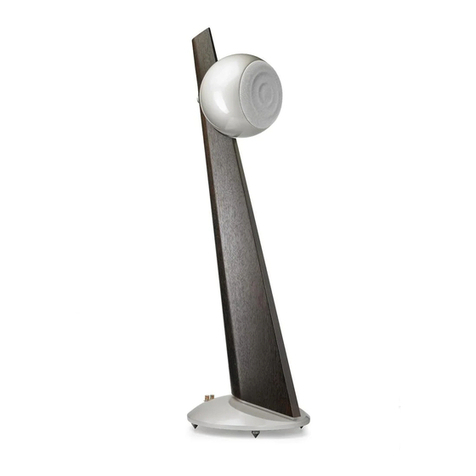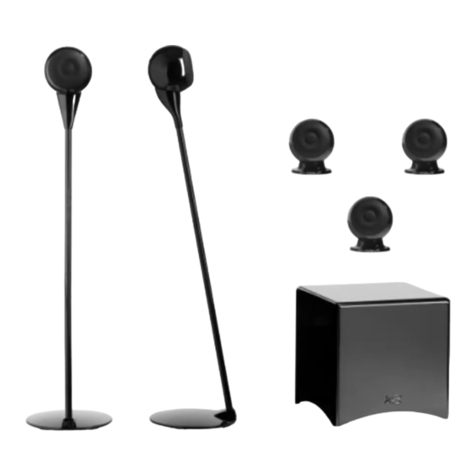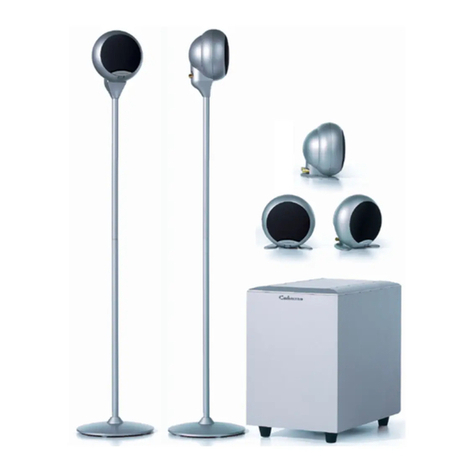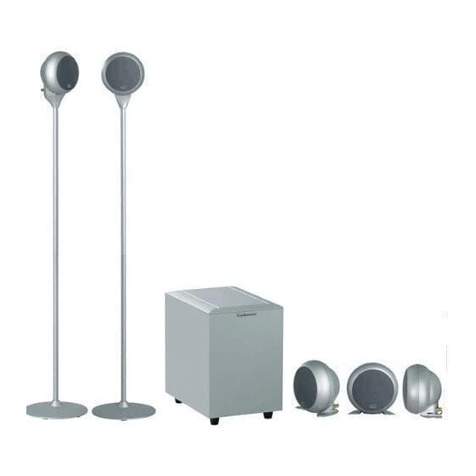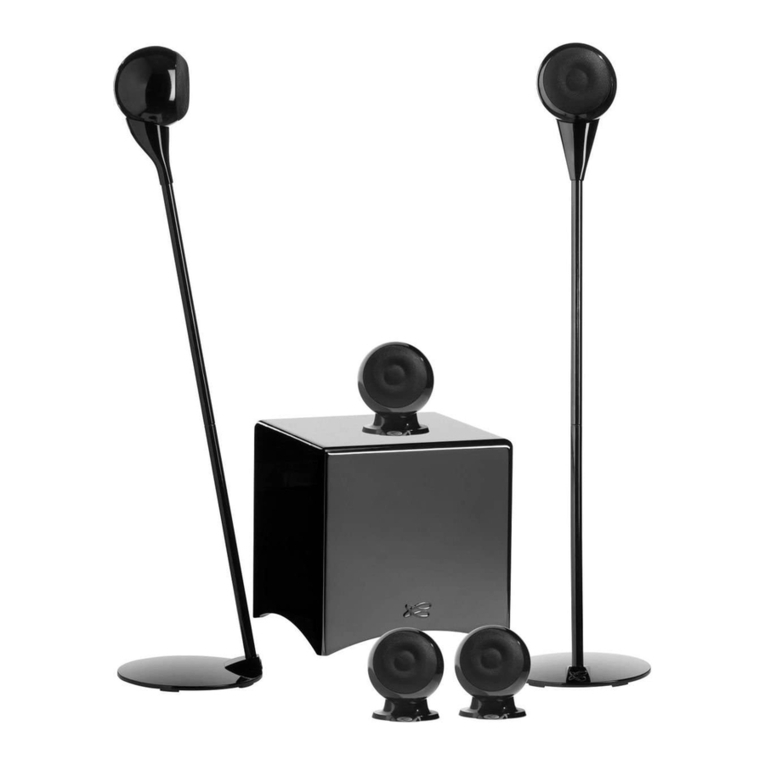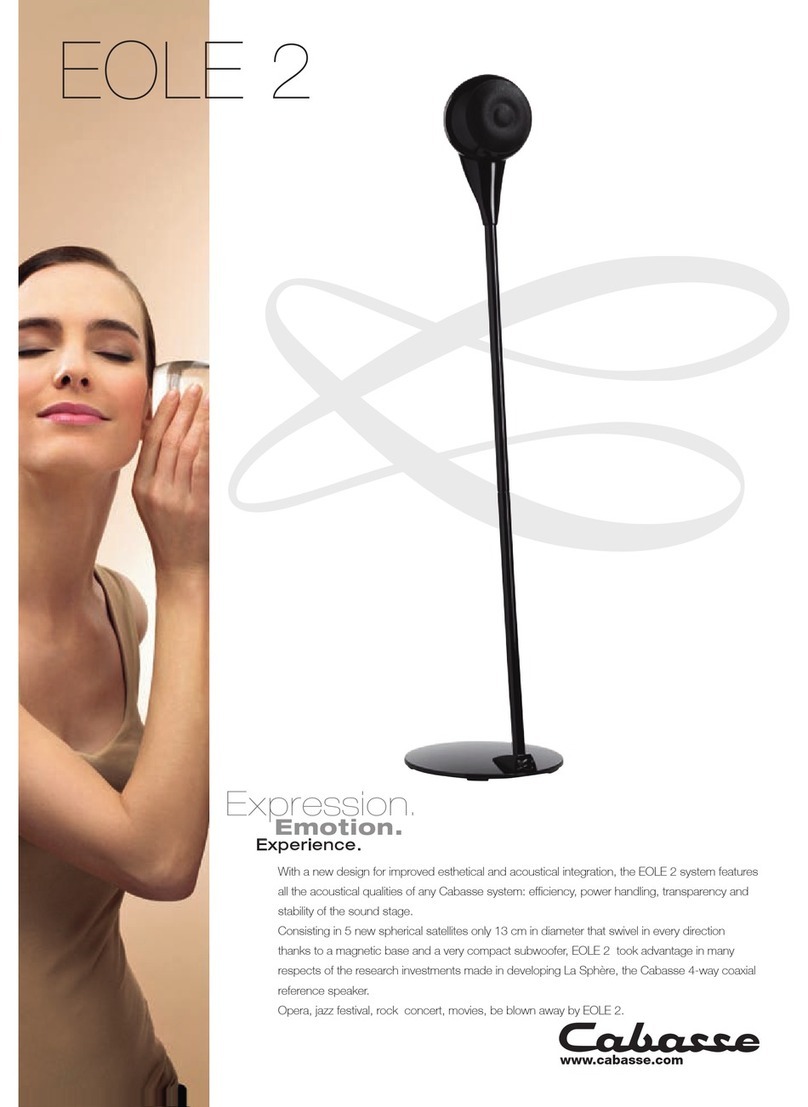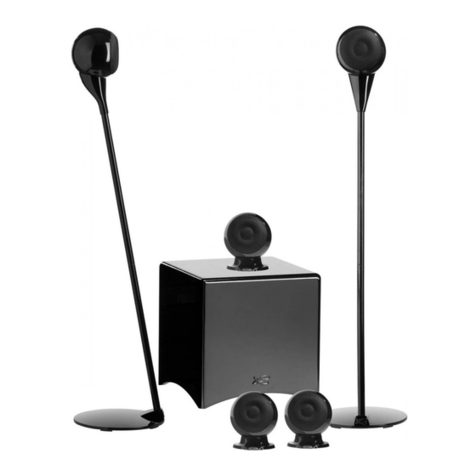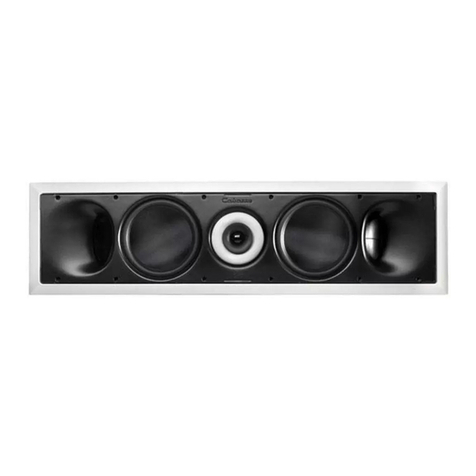Looking at La Sphere, the answer looks obvious, and even
beautiful. However, the impressive number of drawings, plans,
models and prototypes belies that rst impression. The purity
of the design masks the asymmetry of the shape avoiding
diffractions, the choice of materials for rigidity (die cast
aluminum for the stand) and damping (loaded composite for
the bottom plate, a combination of aluminum and elastomer
for the silent blocks and the cones). For a full coherency of
the system, the hull of the enclosure is a sandwich structure
in which two layers of composite are damped by a special
material originally designed to meet the vibration damping
requirements of air and space machines like Airbus, Ariane,
helicopters and jet ghters.
The hull is straightened with curved wooden bracings and
internally covered with a thick layer of acoustic felt. Finally,
the enclosure is tensed through compression when the QC55
is tightened from the back.
A specic digital ltering
For this system, Cabasse designed a specic ltering module and
digital sound processing software. Thanks to digital delays, the
four acoustic centres are not only on the same axis but on one
point; the cross-over areas are optimised with variable slopes up
to 70 dB per octave. The result is a steady 60° diffusion cone with
a full coherency at the listening spots between direct and reected
sounds.
Such digital processing was possible only with the recent launch
of hardware powerful enough to provide a better sound than the
analogue active lters which have been a Cabasse specialty for
decades. Three years and a team of eight people have been devoted
to the theoretical development of the lter module, its software and
the associated measurement protocol. The nal settings made
through a lot of listening tests and measurements in different rooms,
interspersed with anechoic room measurements and hardware and
software modications. This meticulous process led not only to software upgrades, but also, for instance, to reconsider the design of
the lens of the TC23, with modications to its spherical shape; depth and width; a new damping material on the side; additional waves
on the front side to break diffraction effects and a re-shaping arms of the arms holding the lens.
This mastery in digital sound processing, shared and developed by Cabasse with researchers and students of the E.N.T.B. (an
engineering school and international research centre in the eld of information technologies) turns the one and only four-way co-axial
loudspeaker into a true point source:
one acoustic centre•
optimum impulse response with no noticeable variation in a 60° cone•
absolute linear phase even when the parametric equalisers are being used for room adaptation.•
The spatial coherency is perfect.
A powerful but coherent amplication
The monoblock ampliers of the La Sphère system have also been designed using innovative
technologies offering power and renement in a very discrete size. The “Ice Power” modules
present 90% efciency, ten times more than conventional ampliers. Driven by a 1000 W
RMS amplier, the 22” woofer of La Sphère can be played up to its mechanical limits with no
amplier distortion. The same 1000 W monoblock is used for the low-midrange, with 300 W
versions feeding the midrange and tweeter units. Both versions share the same design and
there is no risk of delay between the ampliers that would kill the linear phase of the digital
processing. The use of ampliers far under their nominal power (never more than 5% for the
high frequencies for instance) for the three upper frequency units avoids any risk of amplier
distortion.
Other sets of ampliers can be chosen if there is no restriction regarding available space,
integration and specications.
